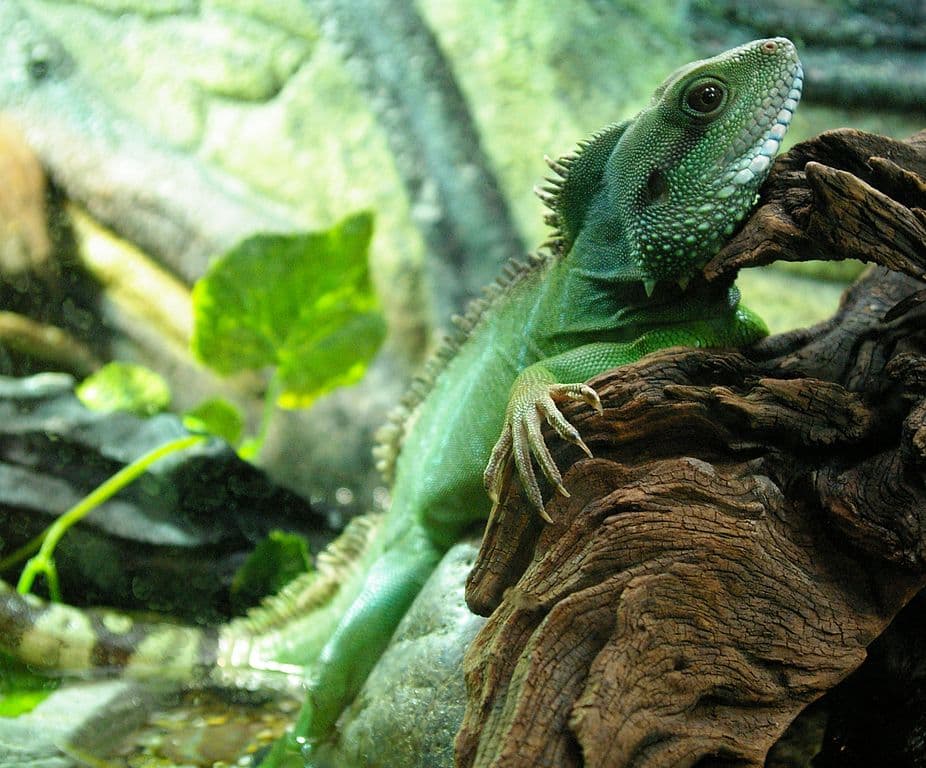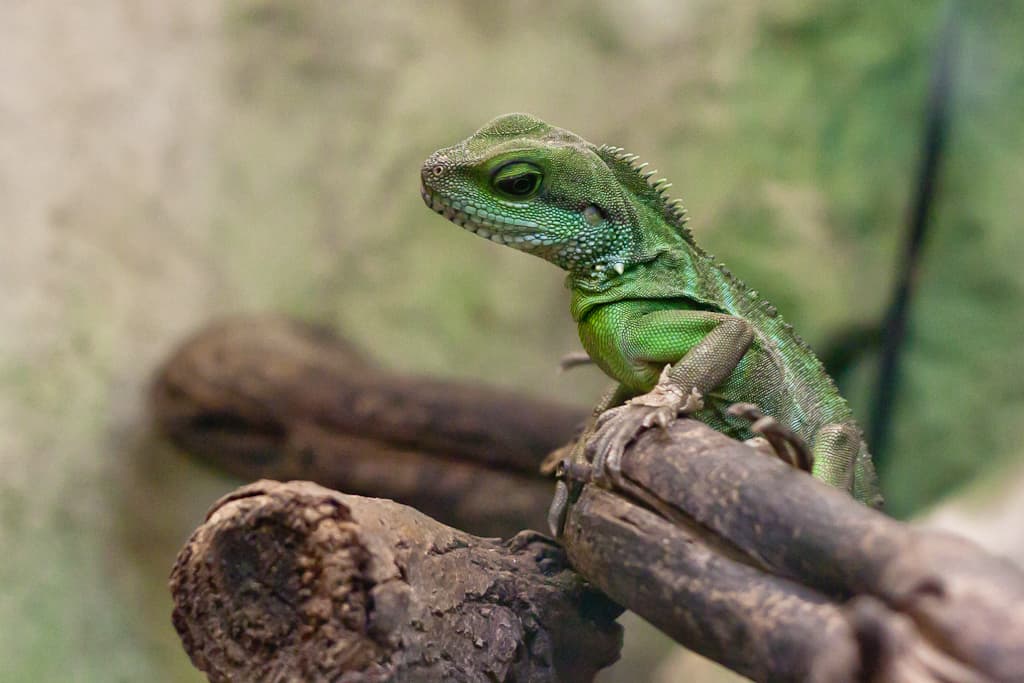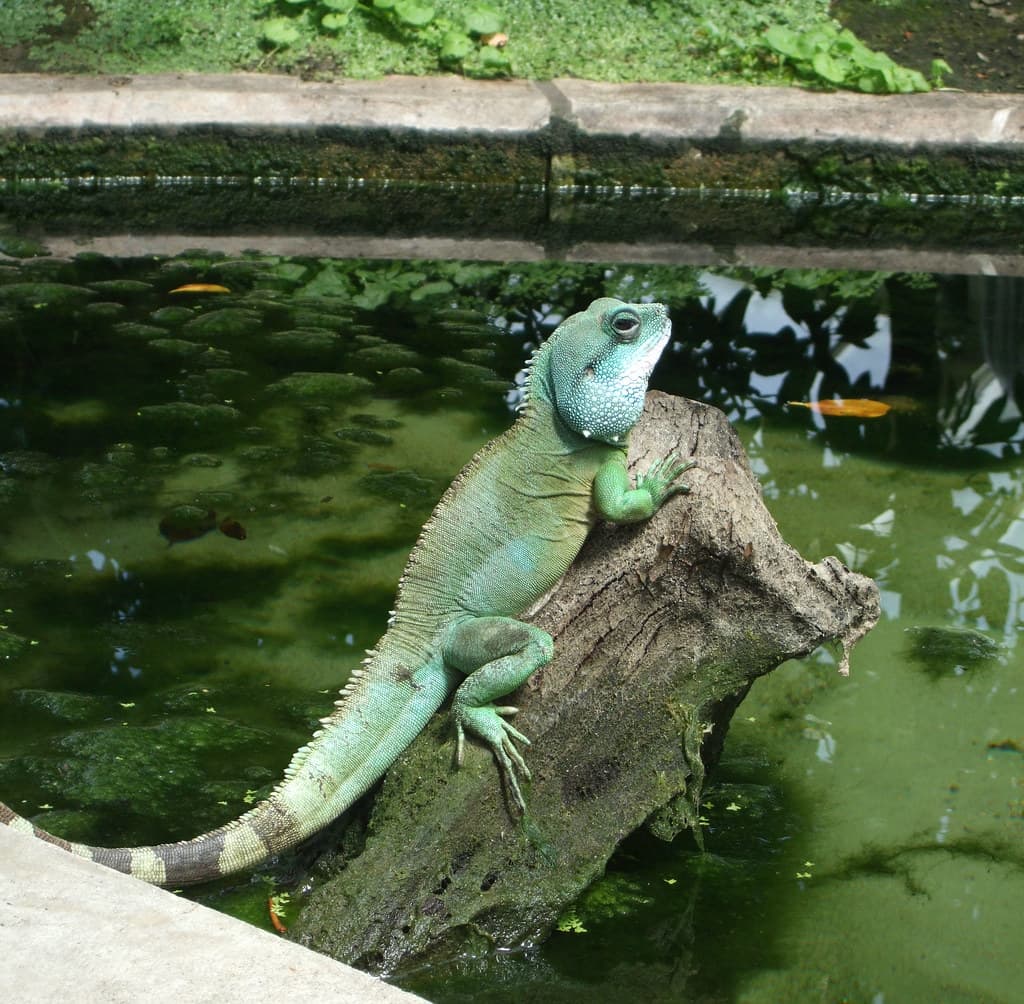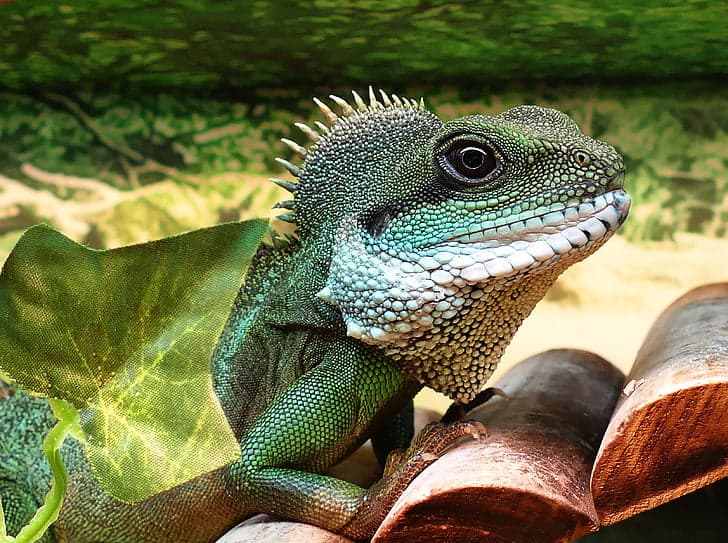Chinese water dragon (បង្គួយត្រង ) aka green water dragon is a lizard that lives in forests, and they are endangered. Despite the name, the Chinese water dragon is not abundant in China because of habitat loss due to dam construction. Not going to lie, people in Southeast Asia would eat anything; and this lizard is one of the meals. People in both the cities and remote areas eat them, not knowing or even caring that these lizards are facing extinction. We are going to talk about this beautiful lizard species today, let’s see how much you know about Chinese water dragons.
Appearance

Chinese water dragons are a lizard that looks very similar to iguanas. A regular Chinese water dragon can grow up to 90 centimeters long, including the tail. In Cambodia, they are rather small but still long while they seem to be large and robust in other countries. Either way, they have muscular limbs with 5 sharp claws in each limb. Their strong claws and limbs make them adept climbers and strong swimmers, keeping them survive in the wild. Along with that, those limbs also allow them to jump and leap as well as run bipedally; running on just two limbs.
One of the most distinctive features of this lizard is a fringe of enlarged scales that runs down its spine. Another interesting thing is the row of large white plate-like scales on the edge of its lower jaws. Looking absolutely majestic. The color of a Chinese water dragon is usually a shade of bright green but it can be brown or brown hue when stressed. As for the tail, it is banded in brown and green with a fine point in the end. A Chinese water dragon uses its long tail for balance and leverage when climbing, and whips it to defend against predators.
Behavior

The Chinese water dragons adapt to living in dense subtropical forests, and they are also semi-arboreal. These lizards are diurnal so they forage for prey within small territories in the morning and midday. At night, they roost on tree branches that overlook streams that they will use as an escape route in case of danger. When threatened, A Chinese water dragon will leap or run to the nearest stream. It either swims to safety or remain submerged for up to 25 minutes to avoid predators.
Males of this species are territorial towards each other, and they have ways to defend their spots. Male Chinese water dragons have a spiky arched crest that extends along the rear of their neck to their back. They can also make their cheeks swell into jowls, and crests and jowl are their main territory defending mechanism. For females and juveniles, they do not commonly show any territorial behaviors at all. Chinese water dragons live in groups of one male with several females. So they will occasionally express aggressive behavior toward each other in the form of arm waving head bobbing, and throat puffing.
Feeding & Habitats

Chinese water dragons’ main sources of food are arthropods but they also feed on eggs, plants, snails, vertebrates, and worms. However, introduced Chinese water dragons in Taiwan are known to prey on frogs, mice, native lizards, and snakes. Their sharp teeth and sticky tongues allow them to catch and eat a wide variety of foods within their range. This is why some can even feed on birds, fish, and large insects.
This lizard species are native to Mainland China and Southeast Asia where they live in subtropical forests. They are very common in dense closed evergreen forests, rainforests, and swamps, usually along the banks of freshwater streams. Their habitat pickiness makes them a geographically restricted species despite their wide distribution. Chinese water dragons’ prefer areas with a dense canopy, streamside boulders, and tall trees. More than that, males prefer deep or wide streams while females like dry land more.
The population of Chinese water dragons is not doing well across their range due to various threats. Habitat destruction is one thing, and harvesting for meat and hunting for the pet trade is another thing. Some store their eggs in rice wine to use as traditional medicine. While some hunt them for their leather and skin for exportation and trade.
Related Post: Flying Lizard Species In Cambodia
